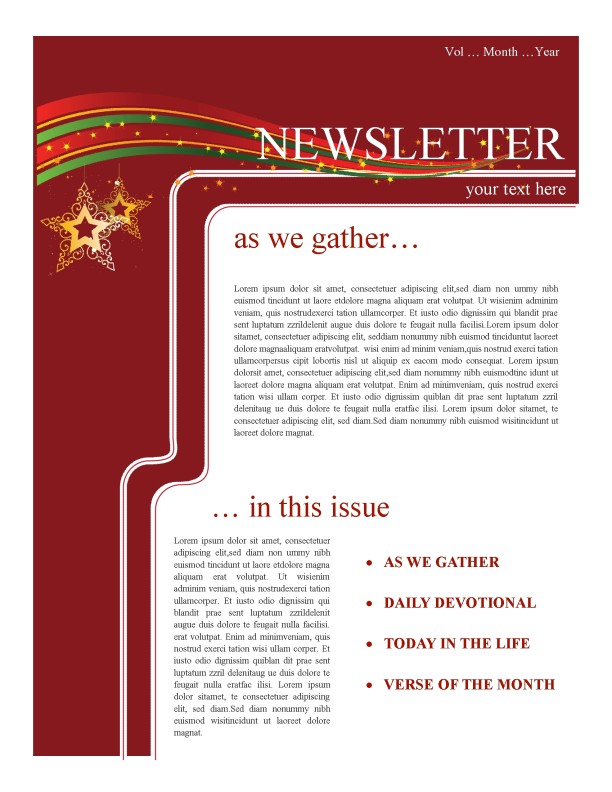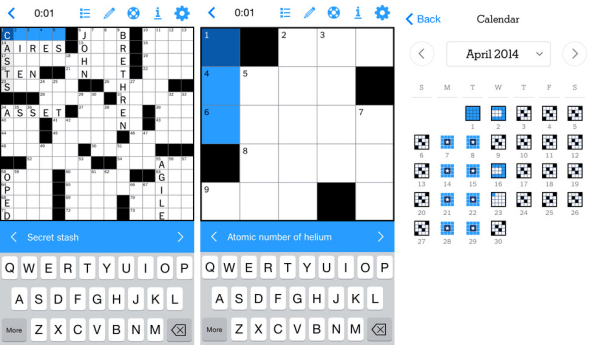

- #PUZZLES FOR EMPLOYEE NEWSLETTERS VERIFICATION#
- #PUZZLES FOR EMPLOYEE NEWSLETTERS TRIAL#
- #PUZZLES FOR EMPLOYEE NEWSLETTERS PLUS#
#PUZZLES FOR EMPLOYEE NEWSLETTERS VERIFICATION#
The case also has focused on the legality of a non-compete clause in Varghese’s employment agreement. For more on the case, see the motions for summary judgment by Varghese ( PDF) and Amazon ( PDF), both of which were turned down by King County Superior Court Judge John Erlick.Īs noted in our original story about the lawsuit, Varghese hasn’t been shy about taking on large companies in court, suing Virgin Mobile in 2006 with allegations that the wireless company misappropriated BrandPort’s trade secrets after engaging in partnership discussions with his company.I concur with the Editorial Board in condemning the employment practices they attribute to Amazon, although the editorial provides no verification of the prevalence of these practices today. Theresa Pruett, a lawyer for Varghese, writes in a filing, “It appears that Amazon believes that regardless of when Varghese’s invention was conceived, Amazon’s illusory promise of continued employment, a plastic toy-like gift and an intangible and ephemeral phone icon give it the ownership rights to Varghese’s invention.” The patent application isn’t yet public, but one of the court filings describes Varghese’s invention as “a web and mobile video advertising application that works to improve ad engagement and product purchase conversion rates from broadcast TV, cable and online video advertising.” However, he was separately terminated after helping to identify and resolve a problem with the Kindle Fire ad platform prior to its launch, he said in his complaint. Varghese alleged that he was let go in retaliation for going over his manager’s head to raising the issue internally. Once the idea was specifically adapted by Varghese for use by Amazon, and actively marketed within the company in the hopes that it would advance his career, the idea transformed into the type of idea that he agreed he needed to assign, and did assign, when he entered into the Invention Assignment Agreement as a condition of his employment.”Īccording to court records, Varghese had hoped to build a new business inside Amazon based on his idea, and receive additional compensation as a leader of the project. Varghese makes this argument despite the fact that he adapted those ideas for use by Amazon and participated in the evaluation and development of the ideas through the filing of a patent application incorporating those ideas by Amazon’s hired outside counsel. “Varghese’s belief in his entitlement to the invention is based upon the misconception that, because he purportedly “conceived” of some ideas prior to starting at Amazon, they are his.

#PUZZLES FOR EMPLOYEE NEWSLETTERS PLUS#
In addition, Amazon’s lawyers point to the terms of Varghese’s employment agreement - including an invention assignment agreement - plus additions made to his invention to tailor the idea to Amazon’s business. They also cite as consideration the patent application filing fee ($1,370, paid by Amazon), the use of Amazon’s legal resources to file the patent, and the salary and benefits received by Varghese during his time as an employee. For one thing, the company spends more than $25 on each puzzle piece, they say in one court filing. They have submitted photos of his puzzle piece as an exhibit in the case, saying it doesn’t count as consideration because Varghese didn’t specifically bargain for it.Īmazon’s lawyers disagree, saying there was a legal exchange of consideration. His lawyers contend that he didn’t receive actual consideration from Amazon, making his assignment of the patent to the company legally invalid. He is asking the court to give him ownership of the invention and the patent application. Varghese, the former CEO of online ad startup BrandPort, contends that the puzzle piece and a special icon next to his name in Amazon’s employee directory were essentially all he received when the company decided to seek a patent on his idea for a new type of video advertising technology. Varghese says he came up with the idea before joining Amazon, and he now wants to pursue it on his own with another company. “It is undisputed that no one at Amazon has taken his invention and done anything with it,” writes a lawyer for the former Amazon employee, Kivin Varghese, in one filing. The ongoing filings in the case are a window into the world of corporate patents - including the tendency of companies to focus on patent applications even in the absence of actual product plans.
#PUZZLES FOR EMPLOYEE NEWSLETTERS TRIAL#
The case, first reported by GeekWire in December, is set for trial in King County Superior Court in Seattle next week, on July 15.


 0 kommentar(er)
0 kommentar(er)
